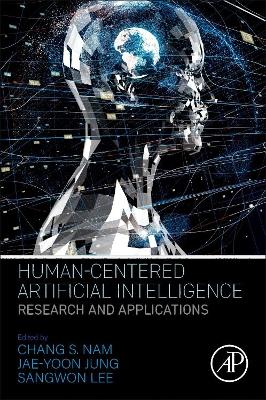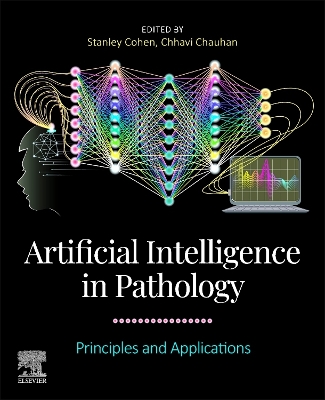Human-Centered Artificial Intelligence
 -10%
portes grátis
-10%
portes grátis
Human-Centered Artificial Intelligence
Research and Applications
Lee, Sangwon; Jung, Jae-Yoon; Nam, Chang S.
Elsevier Science & Technology
05/2022
312
Mole
Inglês
9780323856485
15 a 20 dias
520
Descrição não disponível.
PART I: Explainable AI 1. Are AI models Explainable, Interpretable, and Understandable? 2. Explanation Using Interpretable Models 3. Explanation Using Model-Agnostic Methods 4. Explanation Using Examples 5. Explanation of Ensemble Models 6. Explanation of Deep Learning Models
PART II: User-Centered AI Design and Development Process 7. User-centered explanation interfaces for effective communication between users and AI-based systems 8. Mind perception of human-centered AI: Effects of unfavorable social conditions on user experience of AI 9. Designing user interfaces for AI-based decision support systems
PART III: Applications in Human-AI Interaction 11. Review on recent AI/ML studies about manufacturing systems 12. AI in BCI 13. AI in Human-Robot Interaction 14. AI in Healthcare 15. AI in Decision Making 16. TBD
PART IV: Ethics, Privacy and Policy in Human-AI Interaction 17. Ethics of AI in academic and public discourse 18. Designing explainable artificial intelligence from policy perspectives 19. AI governance 20. TBD
PART II: User-Centered AI Design and Development Process 7. User-centered explanation interfaces for effective communication between users and AI-based systems 8. Mind perception of human-centered AI: Effects of unfavorable social conditions on user experience of AI 9. Designing user interfaces for AI-based decision support systems
PART III: Applications in Human-AI Interaction 11. Review on recent AI/ML studies about manufacturing systems 12. AI in BCI 13. AI in Human-Robot Interaction 14. AI in Healthcare 15. AI in Decision Making 16. TBD
PART IV: Ethics, Privacy and Policy in Human-AI Interaction 17. Ethics of AI in academic and public discourse 18. Designing explainable artificial intelligence from policy perspectives 19. AI governance 20. TBD
Este título pertence ao(s) assunto(s) indicados(s). Para ver outros títulos clique no assunto desejado.
AdaBoost; AI agent; AlphaGo; Anthropomorphism; Artificial intelligence; Artificial intelligence (AI); Autonomy; Backpropagation; Bagging; Black box; Boosting; Class Activation Map; Conv-layer; ConvNet; Corporate social responsibility (CSR); DARPA; Data simulation; Deep learning; EEGNet; Electroencephalogram; Electroencephalography; Ensemble learning; Ethics; Explainable AI; Explainable AI (XAI); Explainable Artificial Intelligence; Explainable artificial intelligence; Explanation interface; FATE; Guided Grad-CAM; Hessian matrix; Human behavior; Human-Computer Interaction; Human-computer interaction; Human-knowledge activation; Hyperpersonalized ads; inTrees; k-nearest neighbor; Labeling; LeNet-5; Machine learning; Machine learning models; Model-agnostic method; Motivated cognition; Neural network; Nondestructive testing; OpenPose; Organizational justice; Partial dependence plot; Posthoc approaches; Pragmatic explanation; Prediction; Prediction integration; Public discourse; Public policy; Q-Learning
PART I: Explainable AI 1. Are AI models Explainable, Interpretable, and Understandable? 2. Explanation Using Interpretable Models 3. Explanation Using Model-Agnostic Methods 4. Explanation Using Examples 5. Explanation of Ensemble Models 6. Explanation of Deep Learning Models
PART II: User-Centered AI Design and Development Process 7. User-centered explanation interfaces for effective communication between users and AI-based systems 8. Mind perception of human-centered AI: Effects of unfavorable social conditions on user experience of AI 9. Designing user interfaces for AI-based decision support systems
PART III: Applications in Human-AI Interaction 11. Review on recent AI/ML studies about manufacturing systems 12. AI in BCI 13. AI in Human-Robot Interaction 14. AI in Healthcare 15. AI in Decision Making 16. TBD
PART IV: Ethics, Privacy and Policy in Human-AI Interaction 17. Ethics of AI in academic and public discourse 18. Designing explainable artificial intelligence from policy perspectives 19. AI governance 20. TBD
PART II: User-Centered AI Design and Development Process 7. User-centered explanation interfaces for effective communication between users and AI-based systems 8. Mind perception of human-centered AI: Effects of unfavorable social conditions on user experience of AI 9. Designing user interfaces for AI-based decision support systems
PART III: Applications in Human-AI Interaction 11. Review on recent AI/ML studies about manufacturing systems 12. AI in BCI 13. AI in Human-Robot Interaction 14. AI in Healthcare 15. AI in Decision Making 16. TBD
PART IV: Ethics, Privacy and Policy in Human-AI Interaction 17. Ethics of AI in academic and public discourse 18. Designing explainable artificial intelligence from policy perspectives 19. AI governance 20. TBD
Este título pertence ao(s) assunto(s) indicados(s). Para ver outros títulos clique no assunto desejado.
AdaBoost; AI agent; AlphaGo; Anthropomorphism; Artificial intelligence; Artificial intelligence (AI); Autonomy; Backpropagation; Bagging; Black box; Boosting; Class Activation Map; Conv-layer; ConvNet; Corporate social responsibility (CSR); DARPA; Data simulation; Deep learning; EEGNet; Electroencephalogram; Electroencephalography; Ensemble learning; Ethics; Explainable AI; Explainable AI (XAI); Explainable Artificial Intelligence; Explainable artificial intelligence; Explanation interface; FATE; Guided Grad-CAM; Hessian matrix; Human behavior; Human-Computer Interaction; Human-computer interaction; Human-knowledge activation; Hyperpersonalized ads; inTrees; k-nearest neighbor; Labeling; LeNet-5; Machine learning; Machine learning models; Model-agnostic method; Motivated cognition; Neural network; Nondestructive testing; OpenPose; Organizational justice; Partial dependence plot; Posthoc approaches; Pragmatic explanation; Prediction; Prediction integration; Public discourse; Public policy; Q-Learning







